Huisfit’s efficient evolution
Stefan Coronel, manager Huisfit at Royal Huisman, on the yard’s position in the refit world and lessons that can be learned from its hybrid projects…
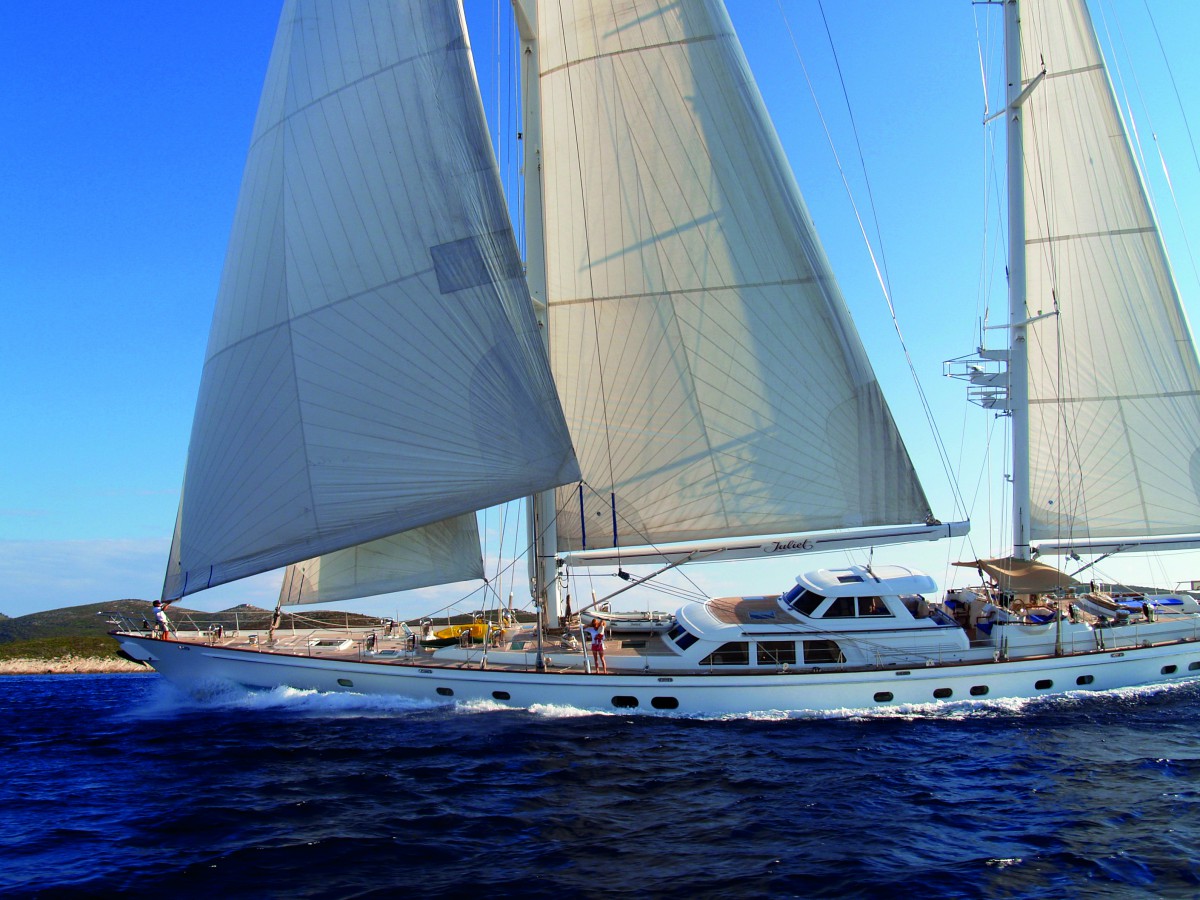 44-metre 1993 ketch Juliet. Photo: Captain Jonathan Allan
44-metre 1993 ketch Juliet. Photo: Captain Jonathan Allan
Our industry stands at a crossroads of innovation, steering away from conventional power delivery systems towards a new era marked by efficiency and adaptability. With an aging fleet, growing environmental consciousness, regulatory changes and a desire for greater efficiency and comfort on board, the refit sector finds itself in a strong position.
Progressive and pragmatic shipyards now offer a range of solutions to increase on-board efficiency and widen the operational capabilities of yachts. Although not a sustainable solution in isolation, hybrid propulsion, if implemented correctly, offers considerable benefits for yacht owners.
Royal Huisman was the first shipyard to launch a superyacht with hybrid propulsion with the groundbreaking 58m sailing yacht Ethereal in 2009. Since then, the shipyard has continued to refine its innovations in hybrid technology with launches such as the NextGEN ketch Elfje, as well as the hybrid conversion at Huisfit in Amsterdam of the 30-metre cutter Foftein in 1999 and the 44-metre ketch Juliet in 1993.
“A well-designed and implemented hybrid system has the potential to deliver silent-operation zero emissions when needed, peak-shaving, shaft-generated power under sail and reduced fuel consumption,” says Coronel. “This also gives a yacht operational flexibility in areas with strict emissions regulations such as the Norwegian fjords.”
Coronel acknowledges that 20 years ago, most shipyards would only promote top speed. “The question [now] is not how fast it is or how powerful the engine is, but instead how efficient it is,” he says. “Normally, the main engine size is defined by the maximum speed of the boats. When you have a hybrid system, you have combustion power and electric power in the same shaft line, meaning the main engine can be smaller and make room for something else.”
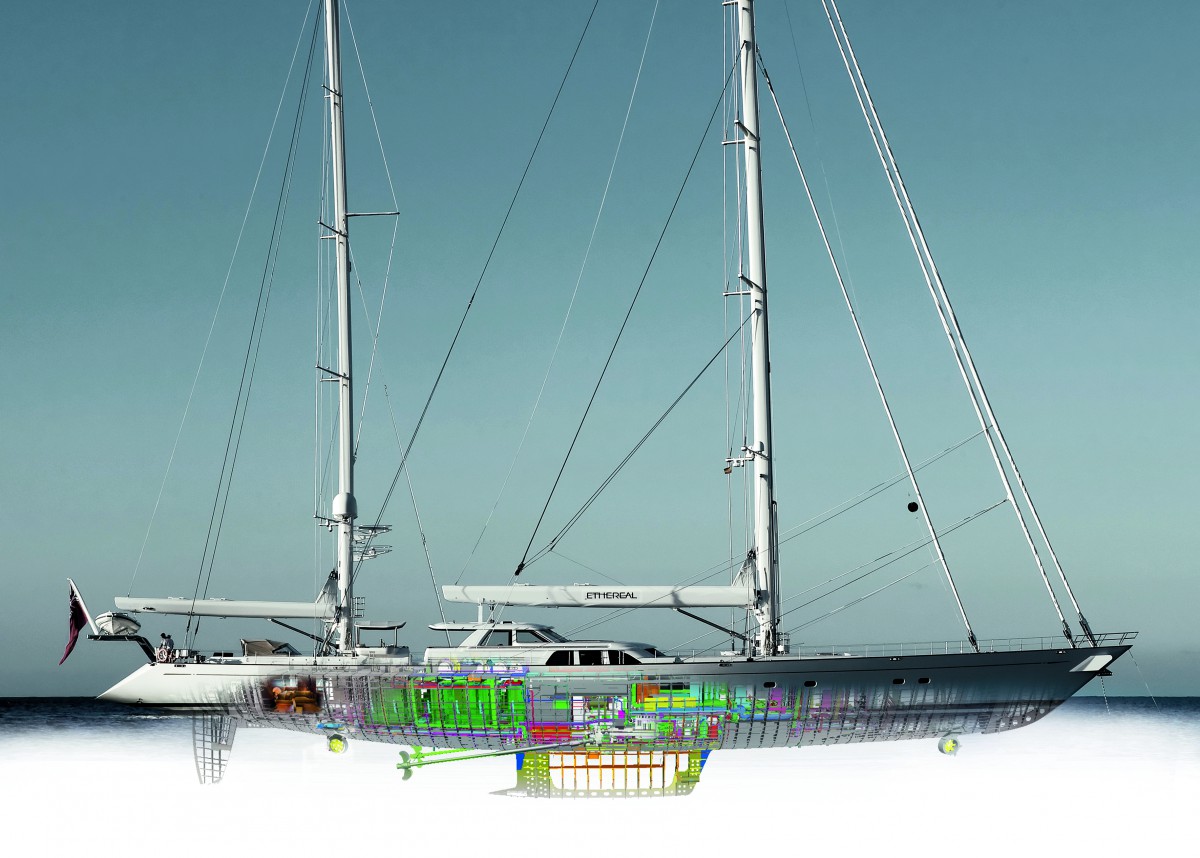 58-metre sailing yacht Ethereal ’s hybrid propulsion system. Image © Franco Pace
58-metre sailing yacht Ethereal ’s hybrid propulsion system. Image © Franco Pace
This marks a shift in mindset in recent years, moving away from the traditional approach of setting up a technical system to deliver top power constantly. Instead, the emphasis of refit projects now lies in the system’s efficiency, and the heartbeat of these refits is in the advancements in battery technology.
“Clients are interested in installing a hybrid vessel for several reasons, and it isn’t typically just for the eco-friendly benefits,” explains Coronel. “Clients are mostly interested in having state-of-the-art technology that has the flexibility to also move to more advanced power sources in due course.
“You can implement this kind of hybrid system on yachts of any size, in theory, as long as you comply with safety regulations. However, the most interesting segment is probably around the 40-metre mark and above, like Juliet. At this size, you have sufficient space for significantly powerful battery packages on board.” Coronel points to the highly specialised hybrid refit on the 1999 30m cutter Foftein.
Juliet returned to Huisfit in 2022, and it provided a perfect platform to integrate a hybrid system.
The focal point of Juliet’s hybrid transformation revolves around a recently integrated gearbox, in electric harmony with an advanced motor generator.
While it isn’t guaranteed that we will see a transformational shift in battery technology, Coronel has seen a transformational shift in the attitudes of some clients towards the technology.
“We have the batteries to effectively double the capacity or halve the volume of previous battery systems,” says Coronel. “Instead of reducing the size of the battery storage to free up more internal volume, we are seeing clients opt for maximising the zero-emissions range of the vessel.”
There is likely going to be a transformative change in battery technology in the near to mid-future, or a new power source will come online. Anticipating this, Huisfit is now opting for a direct current (DC)-based power system for hybrid refits, a departure from its previous AC-driven systems. By laying a DC bus electrical system that can effectively handle the various inputs and demands of a hybrid system, Huisfit sees this framework as future-proofing a refit for more advanced zero-emissions solutions in the future.
“The DC system makes it a little bit easier to exchange components and increases flexibility and versatility,” says Coronel. “This allows for a modular build-up of the systems. In theory, when we have updated yachts like Ethereal and used a DC bus, in 10, 15 or 20 years you will still be able to use the same systems, even when other better forms of power generation enter the fold like fuel cells and even nuclear, for example.” This not only emphasises adaptability, but also underscores the interconnectedness of various components within a vessel’s hybrid system.
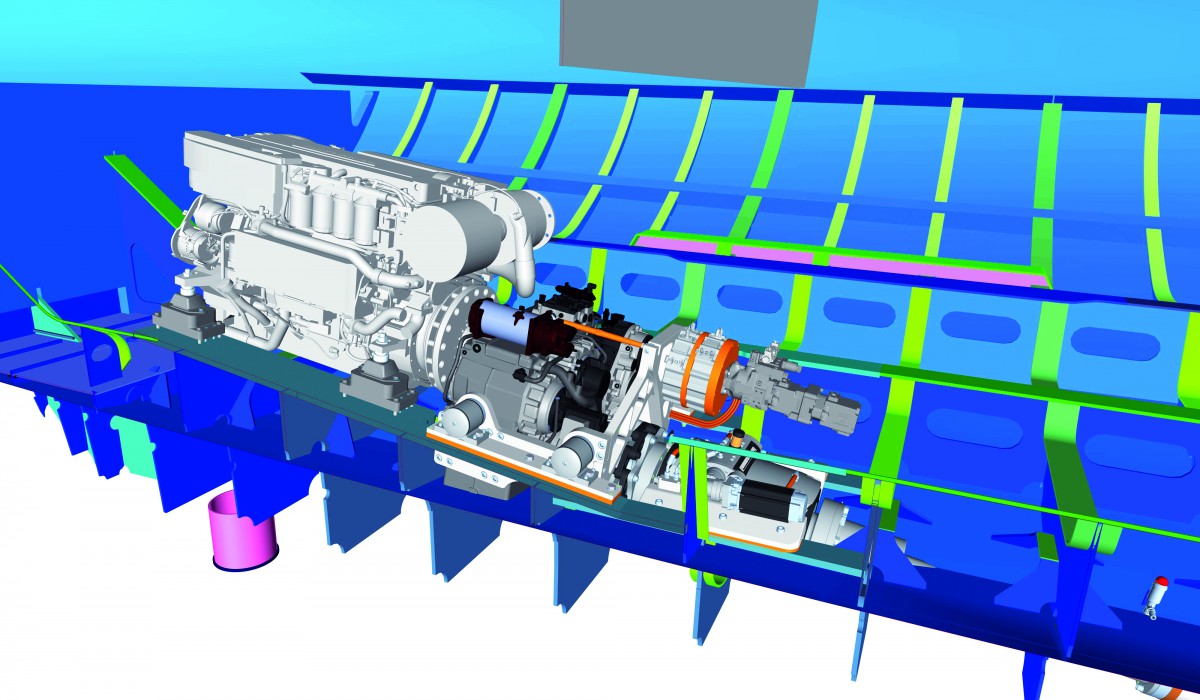 Juliet’s gearbox
Juliet’s gearbox
There are also other practical considerations when implementing a hybrid system on board. The focal point of Juliet’s hybrid transformation revolves around a recently integrated gearbox in electric harmony with an advanced motor generator. This allows for direct electric propulsion, sourced either from the primary engine or extracted from the new high-performance battery bank.
Alternatively, the traditional shaft drive directly from the engine is still available. This system empowers the main engine to fulfil the yacht’s hotel-load demands through the electric motor/generator, while the power-management configuration offers supplementary noiseless alternatives through the sophisticated battery bank.
“Simplification was a critical design brief for us,” says Tim Jones, captain of Foftein. “We wanted a highly automated system with a simple interface that allows the yacht to automatically manage the energy demands with minimal input or monitoring from the crew or owner. Royal Huisman has delivered a sleek and easy-to-operate system that minimises time and maximises efficiency.”
Back-up systems and redundancy are essential in a globally travelling yacht such as Foftein. According to Jones, there was no option to have two generators or two main engines with the yacht’s modest-sized engine room and available space. “With the hybrid energy system, they have mitigated these drawbacks by designing the system in such a way that it has double redundancy on almost every critical system.”
In the case of Foftein, running the main engine in diesel/generator mode has the benefit of not having to run a separate generator to charge the two lithium battery banks while covering the vessel’s hotel loads. This is all at maximum efficiency with no wasted fuel or energy or adding run hours on the generator, reducing service intervals and maintenance costs.
 30-metre 1999 Foftein
30-metre 1999 Foftein
For Coronel, these technical applications and features are the main benefits of a hybrid refit. “There is also the perk of being able to go to some restricted areas where you couldn’t on a combustion engine,” he adds. “You can use diesel to store your electricity, which isn’t sustainable in itself but it will allow you to enter low-emission zones like the Norwegian fjords.”
However, these projects do come with their challenges. Supply-chain issues are common in refit, and Huisfit is no exception, but according to Coronel, the shipyard is now on the other side of issues that were initially caused by the pandemic. “A big challenge when making something this complex is the nature of our work being so unique to each case, so we can’t try things a thousand times on a test model before we launch a vessel,” he says.
“Workforce seems to be an issue globally, but to be honest, we must be the only ones that aren’t suffering in that respect. We have a highly skilled workforce which is invested in our systems, and they tend to stay!”
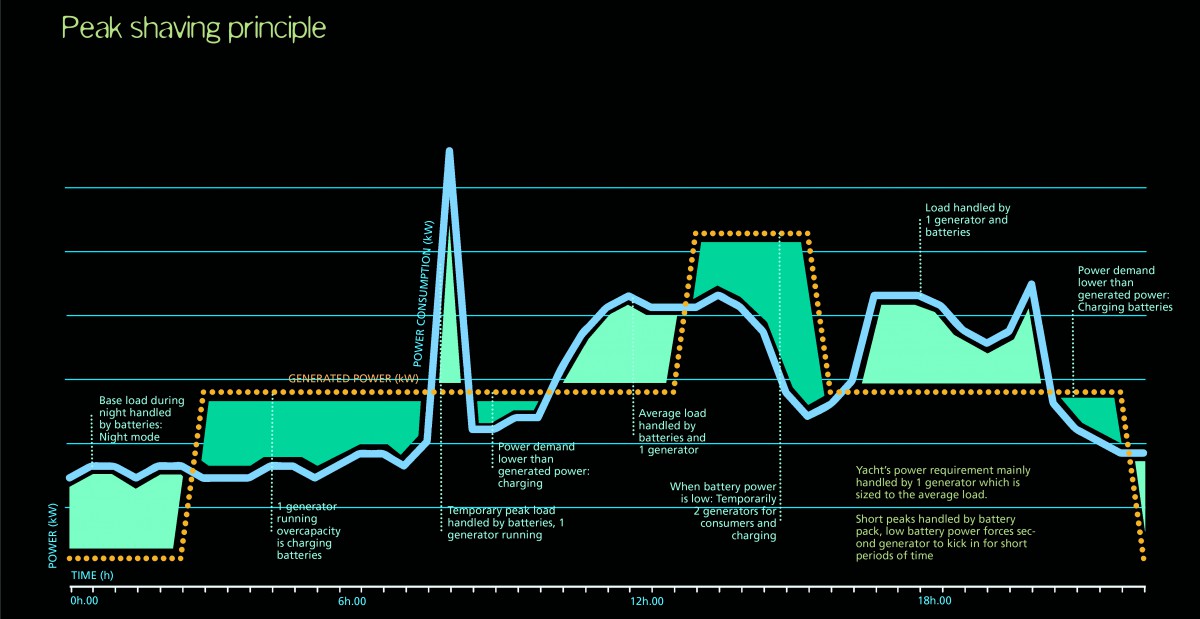 Juliet – peak shaving principle
Juliet – peak shaving principle
Without clear regulations or guidance surrounding emissions and the future fleet, these refits are mostly voluntary. “You are limited in what you can do due to regulations, but this isn’t necessarily something that we feel we are waiting around for them to change either,” concludes Coronel.
“The fleet will need to be updated, and fast. In that sense, we feel as if we have a head start on others since we have been working on improving the efficiency of our systems for a long time now.”
Huisfit is spearheading a transformative shift in refit, steering away from conventional power systems to prioritise efficiency and adaptability. Exemplified by the overhaul of Juliet and Foftein, this approach merges experience and a willingness to evolve with cutting-edge technology.
Adopting a DC-based power system underscores this forward-thinking strategy, ensuring compatibility with evolving power-generation technologies and future industry standards, and benefits such as peak-shaving during sail hoisting and silent ship modes in restricted areas illustrate the tangible advantages of these upgrades.
With regulations likely to change and attitudes shifting towards greater efficiency in all aspects of the industry and operations, shipyards offering system upgrades like this are going to be busy … and those that aren’t will be left behind.
Profile links
NEW: Sign up for SuperyachtNewsweek!
Get the latest weekly news, in-depth reports, intelligence, and strategic insights, delivered directly from The Superyacht Group's editors and market analysts.
Stay at the forefront of the superyacht industry with SuperyachtNewsweek
Click here to become part of The Superyacht Group community, and join us in our mission to make this industry accessible to all, and prosperous for the long-term. We are offering access to the superyacht industry’s most comprehensive and longstanding archive of business-critical information, as well as a comprehensive, real-time superyacht fleet database, for just £10 per month, because we are One Industry with One Mission. Sign up here.
Related news
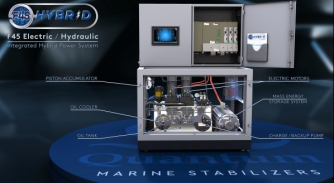
A new cleaner and greener way to power stabilisers
Quantum introduces the F45 Hybrid Power System – an advanced electro/hydraulic power source
Crew
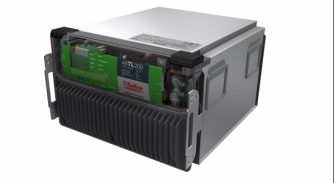
Salt batteries gaining market share
Dario Schiavo explores the role the salt battery may play in a more sustainable future
Technology
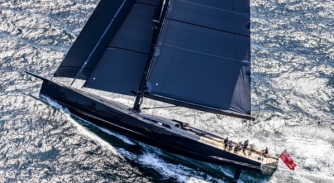
Gelliceaux takes to the sea
Southern Wind’s latest hybrid project has been delivered to its new owners as it departs from Cape Town
Fleet
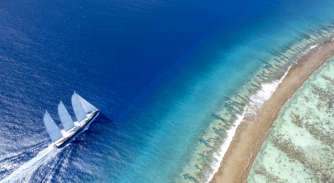
Sea Eagle – a true sailor’s superyacht
Three years after a low-key launch, Captain Mike Douglass discusses the striking schooner as it embarks on a busy charter schedule
Fleet
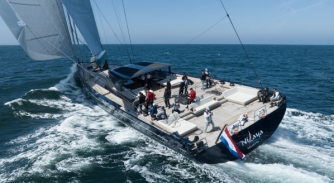
47m high-performance cruiser Nilaya delivered
Following successful sea trials on the North Sea, Nilaya has now departed from Royal Huisman’s facilities in Amsterdam
Fleet
Related news
Salt batteries gaining market share
2 years ago
Gelliceaux takes to the sea
2 years ago
Sea Eagle – a true sailor’s superyacht
2 years ago
47m high-performance cruiser Nilaya delivered
3 years ago
NEW: Sign up for
SuperyachtNewsweek!
Get the latest weekly news, in-depth reports, intelligence, and strategic insights, delivered directly from The Superyacht Group's editors and market analysts.
Stay at the forefront of the superyacht industry with SuperyachtNewsweek



